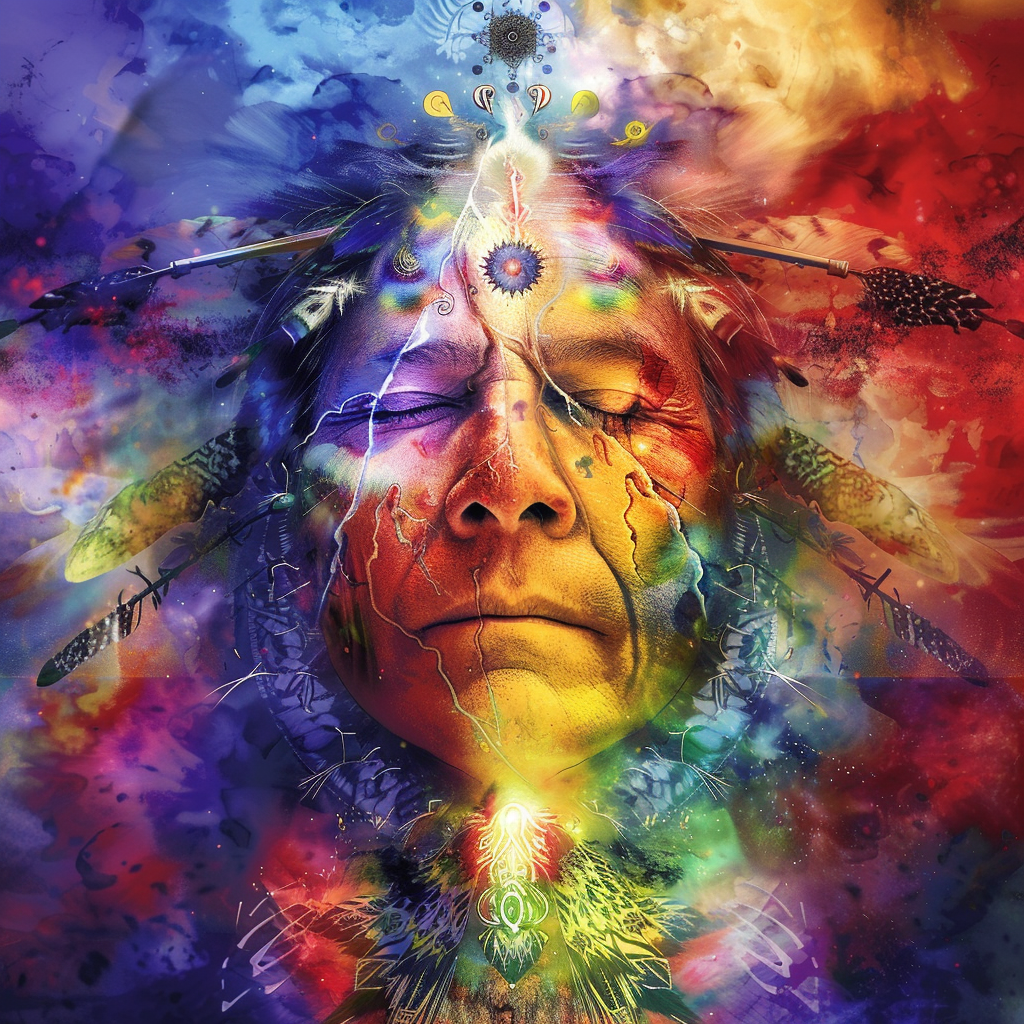Colors transcend mere visual stimuli to become profound symbols of emotions, energies, and the very essence of existence across various cultures around the world. In the realm of shamanism, an ancient practice deeply rooted in the connection between the physical and the spiritual worlds, colors play a pivotal role not just as visual aids but as powerful tools in healing, guidance, and transformation.
Shamanic traditions, rich in rituals and symbolism, view colors as vibrant threads in the fabric of the universe, each hue resonating with specific vibrations that influence the human psyche and the natural world. This article delves into the shamanic perspective on colors, exploring their impact on human nature, emotions, and the broader implications of their use in rituals and everyday life.
The Essence of Colors in Shamanic Practices
Shamanism, a spiritual practice that predates recorded history, is found in cultures around the globe. It is based on the belief that everything in the universe is interconnected through a vast web of energy, and that shamans, as mediators between the physical and spiritual worlds, can interact with this energy for healing, guidance, and insight. Within this framework, colors are not merely decorative; they are essential elements that carry specific energies and meanings.
In shamanic practices, colors are believed to emit unique vibrations that can influence the energy fields around and within individuals, affecting physical, emotional, and spiritual well-being. For instance, the color blue is often associated with healing and tranquility, and is used in ceremonies aimed at calming the mind or communicating with spiritual entities. Similarly, red might be employed to stimulate energy, passion, and the life force.
These color associations are not arbitrary but are based on centuries of observation, experience, and spiritual insight. For example, green, the color most associated with nature, is used in rituals to promote growth, harmony, and renewal, reflecting its omnipresence in the natural world and its vital role in the cycle of life.
Through rituals, attire, and the creation of sacred spaces, shamans utilize these colors to align with the energies of the earth and the universe, facilitating healing, protection, and spiritual journeys. The strategic use of colors in shamanic rituals underscores their significance, not just in achieving the intended effects but in connecting the physical and spiritual realms.
Color Symbolism and Interpretation in Shamanism
In the tapestry of shamanic practice, each color vibrates with its own unique energy and symbolism, playing a crucial role in rituals, healing practices, and teachings. Here’s a glimpse into the palette of meanings:
- Red: Often associated with the life force, vitality, and passion, red is a powerful color in shamanic traditions. It symbolizes the blood of life, representing energy, strength, and the primal forces of nature. In rituals, red is used to stimulate, energize, and initiate action.
- Blue: Symbolizing the sky and the waters, blue is deeply connected to healing, peace, and tranquility. It’s believed to facilitate spiritual communication and bring about calmness of the mind. Shamans use blue in practices aimed at soothing pain, both physical and emotional, and for enhancing spiritual awareness.
- Green: The color of the earth and its vegetation, green represents growth, harmony, and fertility. It is used in shamanic practices to connect with nature’s healing powers, promoting balance, renewal, and restoration of the spirit.
- Yellow: Resonating with the energy of the sun, yellow signifies light, joy, and intellect. It’s associated with clarity, optimism, and the stimulation of mental processes. Yellow in shamanic traditions is used to invoke cheerfulness and stimulate the intellect, aiding in decision-making and the pursuit of knowledge.
- Black and White: Often representing duality, balance, and protection, black and white are significant in many shamanic cultures. Black absorbs negativity and offers protection, while white symbolizes purity, spirit, and the connection to the spiritual realm. Together, they are used to maintain balance and protect against spiritual and physical harm.
The Healing Power of Colors According to Shamanic Beliefs
Shamanic practices often incorporate chromotherapy, or color therapy, a method of treatment that uses the visible spectrum of light and color to affect a person’s mood and physical or mental health. Each color’s unique vibration is believed to correspond to various physical symptoms and emotional states, making it a powerful tool in shamanic healing.
For example, a shaman might use green in a healing ritual to harness its harmonizing effects on the heart and emotions, promoting inner peace and physical healing. Similarly, orange, often associated with creativity and the sacral chakra, could be used to stimulate emotional expression and balance sexual energy.
These healing practices are deeply connected to the chakra system, with each color corresponding to specific energy centers in the body. By aligning and balancing these chakras, shamans facilitate a flow of energy that can lead to profound healing and well-being.
Practical Applications: Incorporating Shamanic Color Wisdom into Daily Life
Bringing shamanic color wisdom into daily life can be a transformative practice, offering new ways to harness energy, promote healing, and achieve balance. Here are a few practical tips:
- Meditation and Visualization: Use colors in meditation or visualization techniques to focus on specific areas of life or aspects of personal health that require attention or healing.
- Wardrobe Choices: Select clothing colors that align with the energies you wish to bring into your day. For instance, wear green when seeking balance, or red to invigorate your spirit.
- Home Decor: Decorate your living space with colors that resonate with shamanic symbolism, creating a harmonious and energetically balanced environment. For example, use blue in areas meant for relaxation and green in spaces where growth and creativity are encouraged.
Conclusion
The shamanic perspective offers a profound understanding of how colors impact our lives, resonating beyond the visual to touch the very core of our being. By exploring and integrating the wisdom of colors as understood in shamanic practices, we can enrich our spiritual and emotional lives, opening ourselves to a more vibrant existence. This ancient wisdom, when applied thoughtfully, can lead to transformations that foster harmony, health, and a deeper connection with the world around us.


